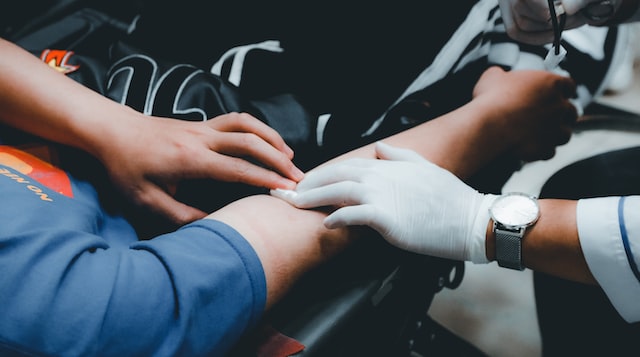Today, the topic of transgender people is important all over the world – in different countries, there are more and more transgender people every year, people are no longer hiding their gender, as it was before. In this regard, the sports federations have difficulties. It is not clear what to do with such athletes: should they remain in their category (by physical sex) or should they be allowed to move to another? This topic is widely discussed not only in the field of sports but also in the media, therefore in this review, we will consider this aspect and the presence of LGBT people in sports today. More information about the LGBTQ presence can be found on the website.
Experts emphasize that issues of sexual orientation should be treated as tolerantly and correctly as possible
Most recently, the International Olympic Committee published a list of rules for international federations (for young adults in professional sports, intercollegiate athletics, sports teams) on the issue of transgender people and athletes who declare their gender identity change. Experts emphasize that issues of sexual orientation should be treated as tolerantly and correctly as possible because no one has the right to condemn another person for his sexual orientation, laugh at him or condemn his choice. In addition, transgender people have the same rights to participate in sports as all other athletes.
It is worth noting that a single solution for all competitions has not yet been found. In some competitions, transgender people (people who have changed their sex from male to a female) need to lower their testosterone levels before moving from one gender to the other. The most popular example of a gender reassigned athlete is the first transgender person in Olympic history, New Zealand’s Laurel Hubbard. She competed at the Tokyo 2020 Olympic games in weightlifting as a female athlete in the women’s sports foundation. There were also gay men (with perceived sexual identity) in many sports participation, gay athletes from a sports team that allowed transgender athletes to take part in the competition. Nowadays in the Australian sports commission, there are educational programs about transgender inclusion, gender equality, LGBTQ youth, the general population, homophobic attitudes, and education amendments. There are also many online resources for high school students where you may find information about sexual identities, gay athletes, young women sports participation, mental health, women athletes, NCAA programs, evidence suggests for those who came out as gay or lesbian, made an equality act.
The document, which was released by the International Olympic Committee, is called “The Foundations of Fairness, Inclusion, and Non-Discrimination Based on Gender Identity and Gender Variation.” This document includes 10 main provisions that are recommended to be taken into account by representatives of sports federations around the world. The important point is not strict rules, but only recommendations, so each federation makes its own decision regarding the participation of transgender people in different competitions.
Below we will discuss the main principles of this document:
All these provisions are posted on the Internet and are in the public domain – if desired, they can be found and read in full.
There is also a clarification to the document that if the federations develop rules by which they will determine in which category a particular athlete will compete (male or female), then such rules must comply with these 10 principles.
- Inclusiveness
The principle of inclusiveness is that any athlete has the right to participate in competitions on an equal basis with other participants, and his gender identity should not become a cause of danger for him. In addition, regardless of gender identity, each athlete has the right to compete without condemnation from other competitors. For this, sports federations are recommended to take measures to ensure the psychological and physical comfort of athletes at all sports facilities. Federations must end all forms of stigma and discrimination against transgender people.
- Preventing harm
It is important to take into account the psychological and physical health of athletes, therefore all sports organizations must prevent possible harm that could threaten athletes when developing, adopting, and interpreting these rules.
- Non-discrimination
In no case should discrimination against any athlete be allowed – that is, all the rules for admission to the competition must be fair and the same for everyone. An athlete may not be denied entry to competition because of his gender identity, physical appearance, or gender variation. Any athlete who meets the physical eligibility criteria must compete in the gender category in which he feels best.
Criteria by which unfair competitive advantage can be determined are allowed – but this advantage will require testing the physical strength and ability of the athlete. However, no athlete should be forced to undergo such testing solely because of their gender identity.
- Honesty
In the process of developing the rules for admitting transgender athletes to competitions, sports organizations should take into account the following parameters:
• Ensure that none of the Athletes in their category has received an unfair or disproportionate advantage (which could have been gained through gender reassignment);
• it is important to exclude any risks to other participants in the competition – including those that relate to their physical safety;
• It is important to avoid situations in which athletes may deliberately state that their gender is different from their physical sex, just to change the category.
- No presumption of advantage
Athletes should not be excluded from competitions solely because of unconfirmed reports that these athletes have an unfair advantage based on their gender or transgender identity.
To admit an unfair advantage requires strong evidence.
- Evidence-based approach
Any potential prohibitions against athletes should be based on expert judgment only and should reflect the following:
• the athlete has a permanent unfair advantage and/or may harm other competitors;
• The Athlete Verification itself must be based on a wealth of data obtained from the study of a specific demographic that fits the required category.
If an athlete is banned from performing in the desired category, he has the right to appeal this decision. In addition, he also has the right to compete in other disciplines, categories, and competitions to which he has an admission.
- The primacy of health
It is important to take into account that sports federations in different countries do not have the right to force athletes to unnecessary medical procedures just for the sake of being allowed to compete.
Eligibility criteria cannot include gynecological examinations or any other invasive physical procedures that are used to determine the gender of an athlete.
- Stakeholder Leadership
Sports organizations must take into account the views of athletes when developing rules, whose position depends on these rules. All decisions regarding the eligibility of athletes to compete must follow the basic principles of fairness and impartiality.
- Privacy of information
Sports organizations are required to maintain the confidentiality of athletes’ personal information that is potentially subject to restrictions. It’s about gender identity.
The collection of material and data takes place only after the consent of the athlete who requests admission to the competition.
Federations shall by any means prevent the leakage of athletes’ confidential health and other personal information.
- Regular revision of the rules
The rules for the eligibility of athletes to compete should be reviewed periodically to reflect important developments in the areas of ethics, human rights, science, medicine, and law.
Even though these rules are just recommendations and not strict requirements, based on them we can conclude that sports federations today should pay special attention to the issue of transgender people – including ensuring that they have the opportunity to participate in competitions on an equal basis with all other athletes, regardless of their sexual identity. It is worth saying that female athletes and male athletes are not the only ones – there are also gay and lesbian athletes, LGBT athletes, LGBTQ students, who have transgender status or doesn’t have their gender equality yet, first openly gay athlete, transgender student athletes, and others from the sexual minorities. There should be no gender stereotypes among college students, transgender students, trans athletes, lesbian coaches in the sporting environment because all people are equal in their rights. All people should care about their mental health and those to have poor mental health should have a right to increase their self-esteem.
This issue directly concerns a person’s tics, therefore, it should be resolved as tolerantly as possible about everyone. We can say that the world sport has already begun to change – perhaps shortly new categories will be introduced, in addition to men’s and women’s.








